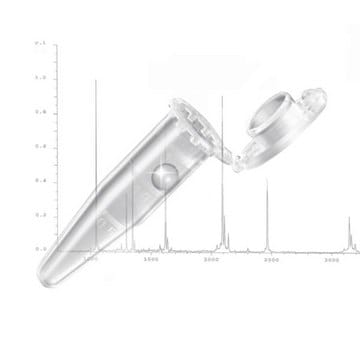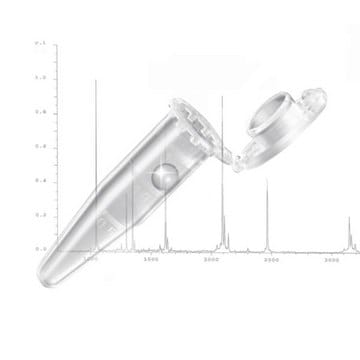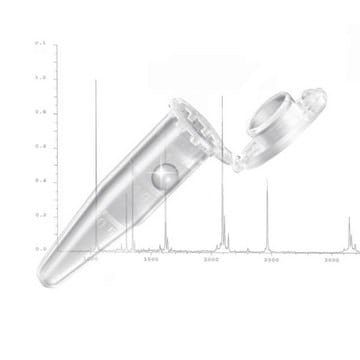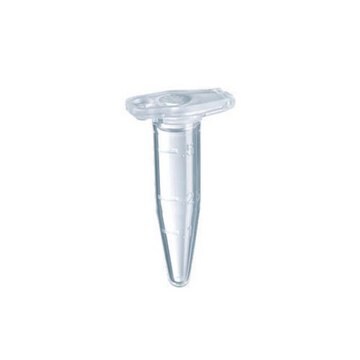EP022431102
Eppendorf® Protein LoBind tubes
capacity 2.0 mL, PCR clean, pkg of 100 ea (2 x 50ea)
About This Item
Produits recommandés
Matériaux
(push fit)
polypropylene cap
Stérilité
non-sterile
Caractéristiques
PCR clean
Conditionnement
pkg of 100 ea (2 x 50ea)
Fabricant/nom de marque
Eppendorf® 022431102
Paramètres
-18,000 × g max. RCF
Capacité
2.0 mL
Diamètre
10.5 mm
Couleur
clear
Adéquation
suitable for PCR
Type de liaison
low binding surface
Vous recherchez des produits similaires ? Visite Guide de comparaison des produits
Description générale
- Eppendorf LoBind material ensures optimized sample recovery for improved assay results
- Free of surface coating (e.g., silicone) to minimize the risk of sample interference
- Lot-certified PCR clean purity grade: free of human DNA, DNase, RNase and PCR inhibitors
- Available in tube, microplate, and deepwell plate formats for easy-up scaling
- Precise lid sealing to minimize evaporation
Caractéristiques et avantages
Informations légales
Faites votre choix parmi les versions les plus récentes :
Certificats d'analyse (COA)
It looks like we've run into a problem, but you can still download Certificates of Analysis from our Documents section.
Si vous avez besoin d'assistance, veuillez contacter Service Clients
Déjà en possession de ce produit ?
Retrouvez la documentation relative aux produits que vous avez récemment achetés dans la Bibliothèque de documents.
Notre équipe de scientifiques dispose d'une expérience dans tous les secteurs de la recherche, notamment en sciences de la vie, science des matériaux, synthèse chimique, chromatographie, analyse et dans de nombreux autres domaines..
Contacter notre Service technique








